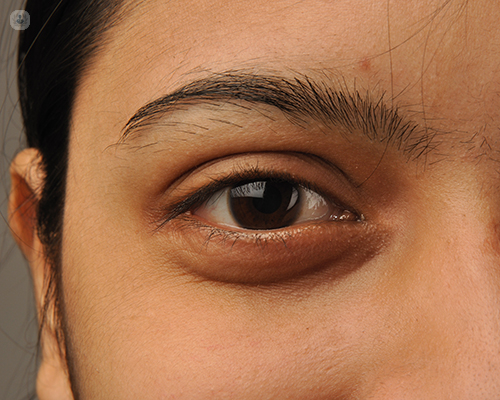Cataracts and glaucoma: what is the relationship between both conditions?
Written by:In our latest article, highly regarded and skilled consultant ophthalmic surgeon, Ms Nishani Amerasinghe, explains in detail what exactly the relationship is between both cataracts and glaucoma, and reveals what the most effective treatment options are for cataracts in glaucoma.
What is the exact relationship between cataracts and glaucoma?
They are both separate eye-affecting conditions. In cataracts, it is the lens of the eye that becomes cloudy. Glaucoma, on the other hand, is a condition that affects the optic nerve, the nerve that takes the information received from the eye to the brain.
Glaucoma is a progressive condition that causes a loss of nerve fibres within the optic nerve, and the patient experiences a loss of vision due to this. When this loss occurs, we can’t bring any vision back. We just have to stop the progression as much as we possibly can. With cataracts, however, we can perform surgery to improve the vision by removing the cataract.
How common is it to find cataracts in glaucoma?
In the UK, glaucoma is found in about one in every 50 patients in people over the age of 40, and in about one in 10 in people over the age of 75. Cataracts, meanwhile, actually develop in everyone over a period of time as the lens grows throughout a person’s life.
So, as we can clearly see, there is a significant portion of the population with glaucoma that have cataracts because of the demographic that both conditions affect.
How dangerous is it to find cataracts in glaucoma?
If you develop a cataract in open-angle glaucoma (the most predominant of the two types), you don’t really affect the draining angle of the eye at all. In terms of surgery, it can potentially be quite risky in the event that the pressure goes up during or after cataract surgery.
There is another type of glaucoma, which is called angle-closure glaucoma, where the drainage angle is quite narrow. As the lens grows with time, it becomes bigger and pushes on the drainage angle, which can close off the angle completely. Therefore, there is no way for fluid to drain out of the eye, and so the pressure can go up quite high and quite quickly. In these patients, having a bulky lens is a factor to their disease and they require us to take out their bulky natural lens to open out the drainage angle.
How is this treated?
Cataracts are usually treated with cataract surgery. Glaucoma, meanwhile, can be treated in numerous ways. We can use drops to lower the pressure, by either reducing the production of fluid within the eye, or by increasing the outflow of the fluid of the eye.
We can also carry out laser treatment, which leads to a reduction in pressure. We can also perform surgical procedures, which allow for increased outflow. One of the most definite procedures, trabeculectomy, forms a little flap in the eye, and allows for fluid to pass out that way.
We can also use glaucoma drainage devices. Another option is minimally invasive glaucoma surgery (MIGS), where we use microsurgical techniques and devices to lower the pressure that way. Cataract surgery can also be performed at the same time as these MIGS procedures.
How are cataracts and glaucoma caused?
There are several causes for both glaucoma and cataracts. Cataracts usually occur with increasing age, and can be associated with conditions such as diabetes, excessive alcohol consumption or smoking, obesity, use of steroids, as well as previous eye injuries, surgery, or family history.
With glaucoma, there are many risk factors. It is more prevalent in people over the age of 40. A family history will increase one’s chances of suffering from glaucoma. High eye pressure is a big risk factor, and is our only treatable risk factor for glaucoma. Being long or short-sighted can put you at risk of glaucoma, as can previous surgery or injuries to the eye.
Also, thinning of the retina or optic nerve fibre can increase your risk of glaucoma, as well as conditions such as high blood pressure, poor blood circulation, and diabetes.
Ms Nishani Amerasinghe is a highly skilled and trusted consultant ophthalmologist who can guide you in the right direction in relation to treatment for both glaucoma and cataracts. Book a consultation with her today via her Top Doctors profile.




